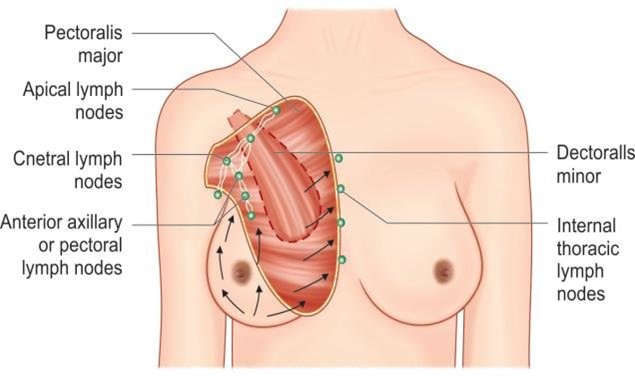A nurse is caring for a client who is receiving parenteral nutrition and has a new prescription for probiotic therapy. Which of the following findings indicates that the therapy is effective?
Client reports ability to complete ADLs.
Client's mucous membranes are pink.
Client's blood glucose level is within the expected reference range.
Client has soft, formed bowel movements.
The Correct Answer is D
Choice A reason: Reporting ability to complete ADLs is not a specific finding that indicates that probiotic therapy is effective. Ability to complete ADLs depends on various factors, such as energy level, muscle strength, mobility, cognition, and motivation. Ability to complete ADLs may improve with parenteral nutrition, but not necessarily with probiotic therapy.
Choice B reason: Having pink mucous membranes is not a specific finding that indicates that probiotic therapy is effective. Pink mucous membranes reflect adequate hydration and oxygenation status, which are important for overall health, but not directly related to probiotic therapy.
Choice C reason: Having blood glucose level within the expected reference range is not a specific finding that indicates that probiotic therapy is effective. Blood glucose level is influenced by carbohydrate intake, insulin production, and medication use, which are related to parenteral nutrition, but not probiotic therapy.
Choice D reason: Having soft, formed bowel movements is a specific finding that indicates that probiotic therapy is effective. Probiotic therapy is the use of beneficial bacteria or yeast to restore the normal flora and function of the gastrointestinal tract, which can prevent or treat diarrhea, constipation, or infection. Having soft, formed bowel movements shows that the client has a healthy and balanced gut microbiome.

Nursing Test Bank
Naxlex Comprehensive Predictor Exams
Related Questions
Correct Answer is A
Explanation
Choice A reason: Alternating the first breast that is offered to the baby with each feeding is a good practice for breastfeeding because it can ensure equal stimulation and drainage of both breasts, which can prevent engorgement, mastitis, or low milk supply. Alternating breasts can also provide the baby with both foremilk and hindmilk, which have different compositions and benefits.
Choice B reason: Storing breast milk in the refrigerator up to 48 hours is not a good practice for breastfeeding because it can reduce the quality and safety of the milk. Breast milk should be stored in the refrigerator for no longer than 24 hours or in the freezer for no longer than 6 months. Breast milk should also be stored in clean, sterile containers and labeled with the date and time of expression.
Choice C reason: Nursing the baby once every 4 hours is not a good practice for breastfeeding because it can decrease the milk production and supply, which can affect the growth and development of the baby. Breastfeeding should be done on demand or at least every 2 to 3 hours during the day and every 3 to 4 hours at night. Breastfeeding should also last for at least 10 to 15 minutes per breast or until the baby is satisfied.
Choice D reason: Offering the baby water between feedings is not a good practice for breastfeeding because it can interfere with the baby's appetite and intake of breast milk, which can cause dehydration, malnutrition, or failure to thrive. Breast milk contains enough water and nutrients to meet the baby's needs for the first six months of life. Water should be avoided or limited until the baby starts solid foods.

Correct Answer is B
Explanation
Choice A reason: Dietary restrictions will not eventually allow the intake of gluten to resume. Gluten is a protein found in wheat, barley, rye, and some oats. It causes damage to the small intestine in people with celiac disease. The only treatment for celiac disease is a lifelong gluten-free diet.
Choice B reason: This condition may cause secondary lactose intolerance. Lactose is a sugar found in milk and dairy products. It is broken down by an enzyme called lactase in the small intestine. People with celiac disease may have reduced levels of lactase due to the damage to the small intestine caused by gluten. This can lead to lactose intolerance, which is the inability to digest lactose properly. Symptoms of lactose intolerance include bloating, gas, diarrhea, and abdominal pain after consuming dairy products.
Choice C reason: Nutritional therapy for this condition does not include limiting proteins and calories. People with celiac disease need adequate amounts of proteins and calories to maintain their health and prevent malnutrition. They also need to ensure that they get enough vitamins, minerals, and fiber from gluten-free sources.
Choice D reason: A normal diet cannot resume after a period of remission. Celiac disease is a chronic autoimmune disorder that does not have a cure. Even if the symptoms improve or disappear, the damage to the small intestine can still occur if gluten is consumed. Therefore, a strict gluten-free diet must be followed for life.
Whether you are a student looking to ace your exams or a practicing nurse seeking to enhance your expertise , our nursing education contents will empower you with the confidence and competence to make a difference in the lives of patients and become a respected leader in the healthcare field.
Visit Naxlex, invest in your future and unlock endless possibilities with our unparalleled nursing education contents today
Report Wrong Answer on the Current Question
Do you disagree with the answer? If yes, what is your expected answer? Explain.
Kindly be descriptive with the issue you are facing.
